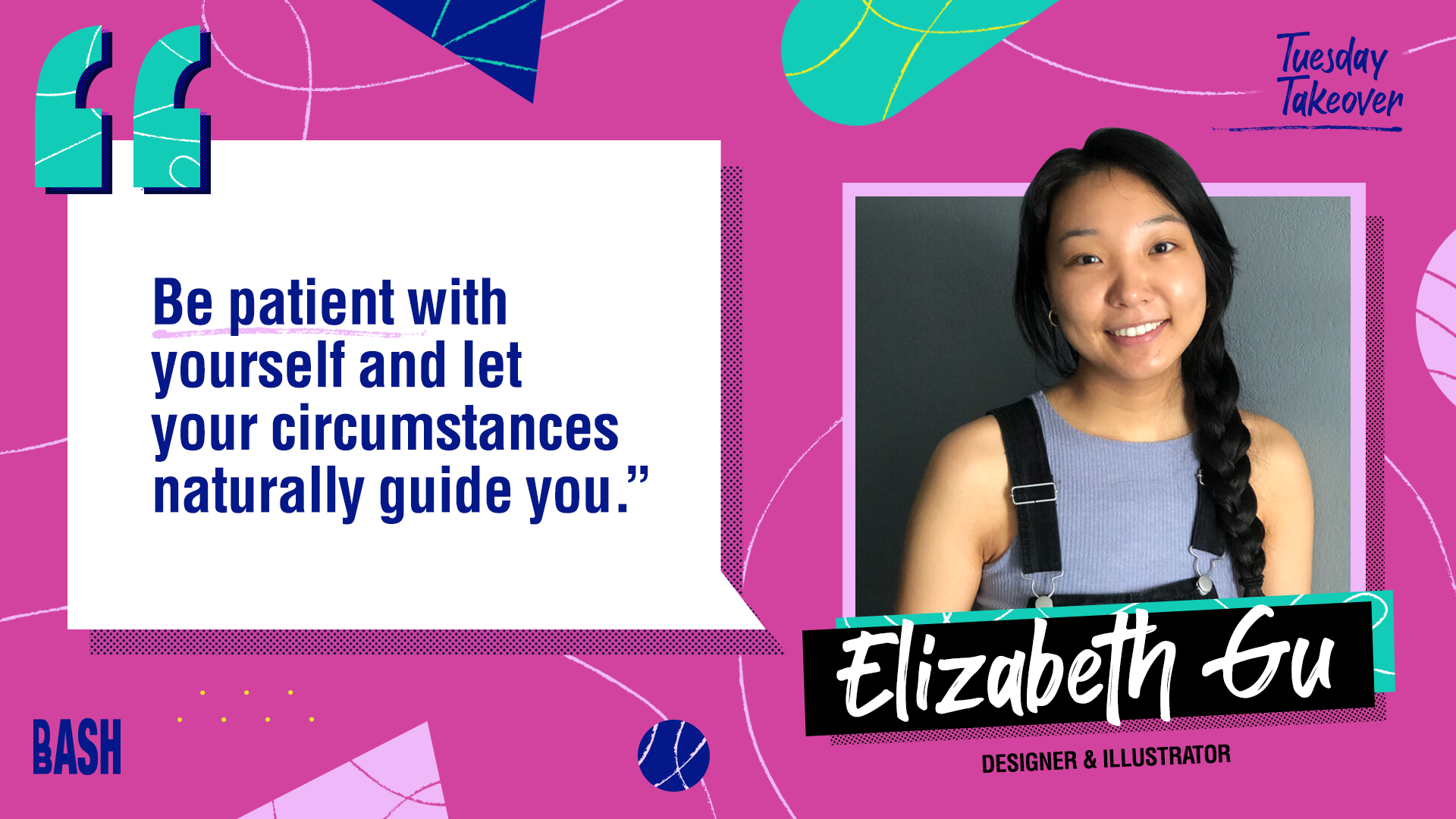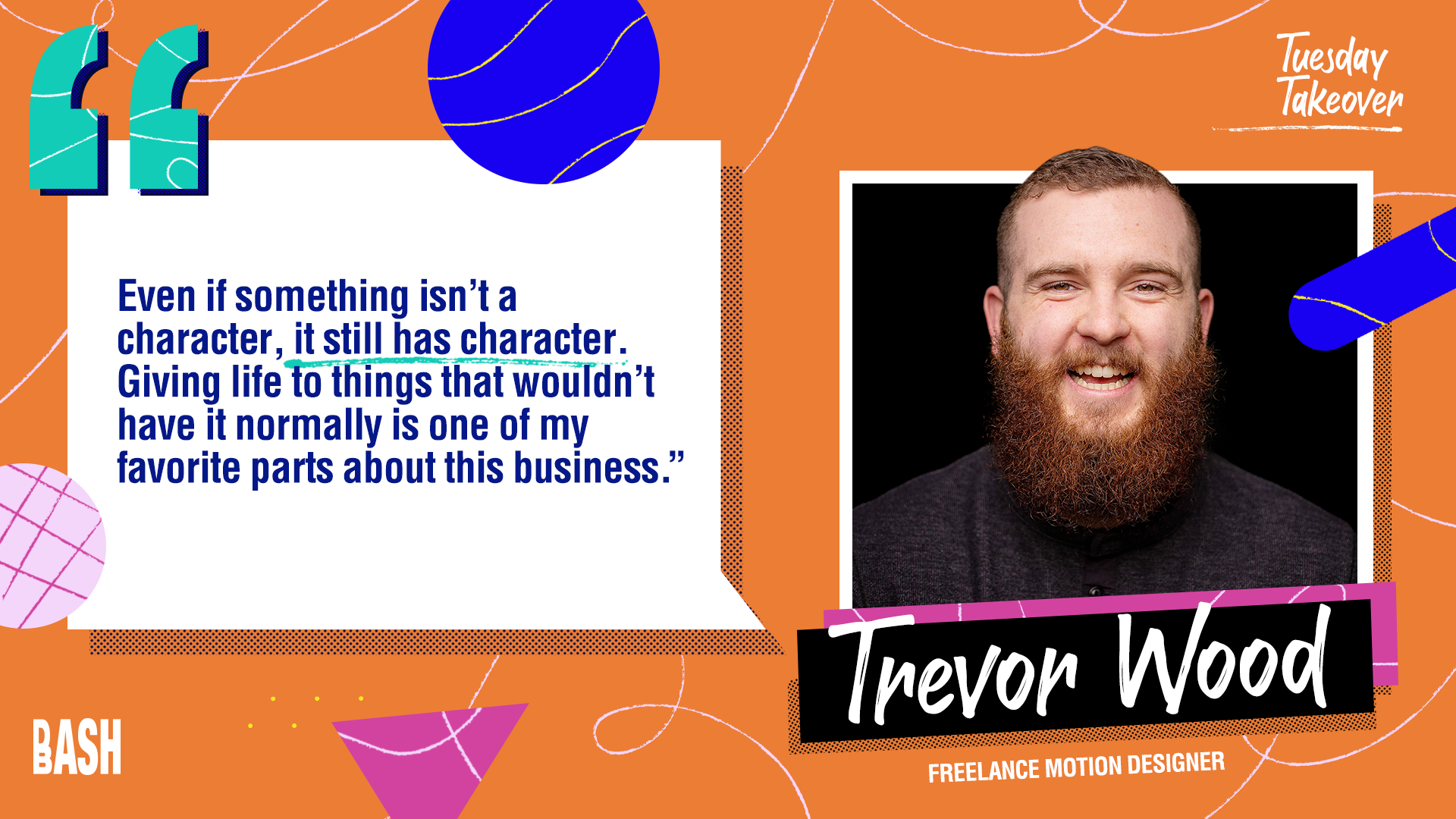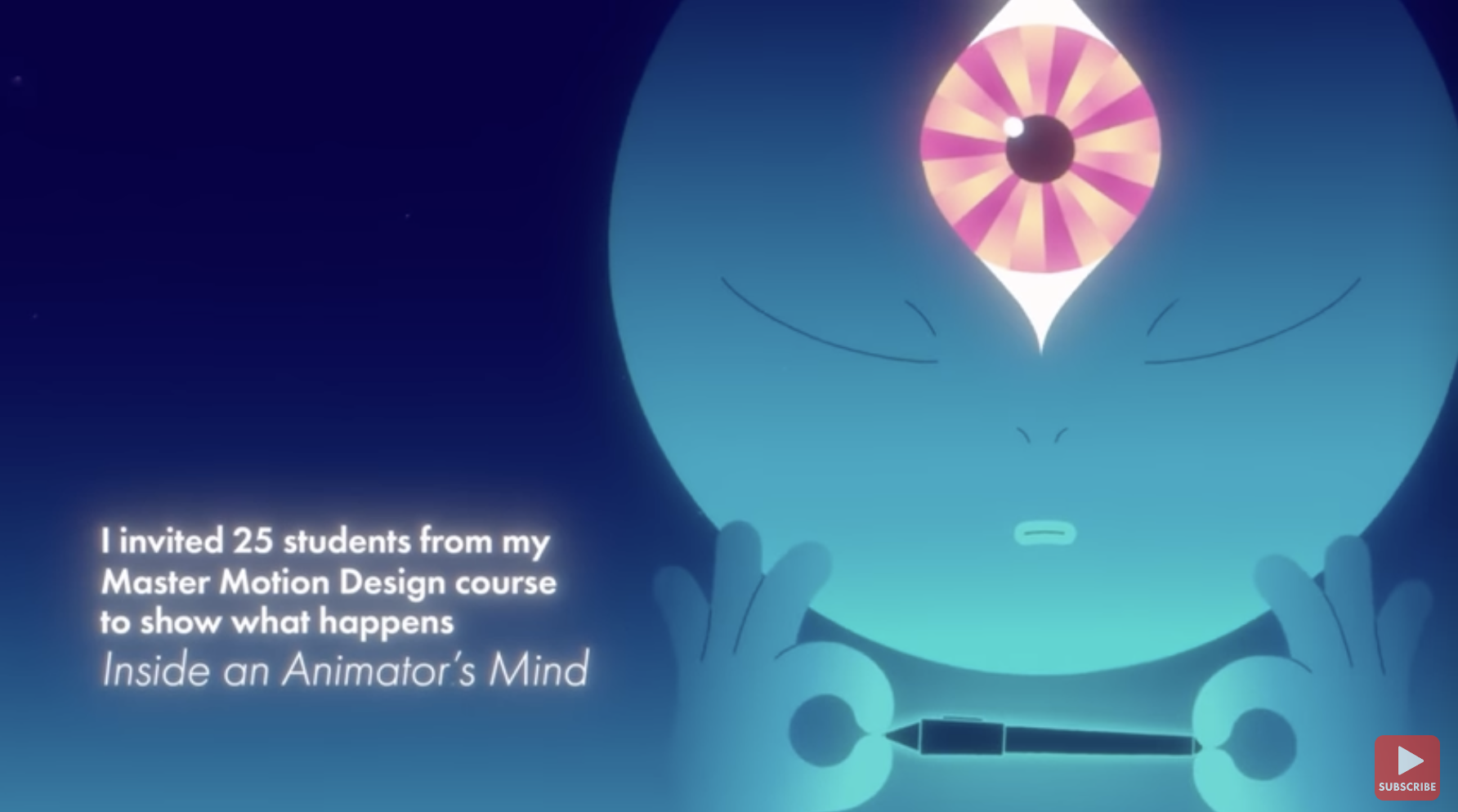Takeover Tuesday with Elizabeth Gu
An interview with Elizabeth Gu: is an illustrator and designer based in Houston, TX. With an interest in creating worlds suspended between fantasy and reality, she likes to relate these unseen, surreal worlds to the psyche and internal states of mind that are often difficult to express through words.
Interviewer: Bella Alfonsi
Read time: 5min
Bella:
Hi Elizabeth! Thanks for taking over this Tuesday with us. Can you please introduce yourself?
Elizabeth:
First of all, thank you so much for having me! I'm so excited to contribute to this series.
My name is Elizabeth and I’m a designer and illustrator based in Houston, TX. I initially studied civil engineering before taking what feels like a tremendous leap into the design world. At the time, I was working as Art Director at my school’s daily news publication and pretty much decided to take my interests in illustration and design more seriously. After shifting gears, I got my first design internship with Pixel Park. Interning there was super formative to my artistic growth, but also more profoundly - my sense of community in the motion design industry. Shout out to the Pixel Park family, love you guys! <3
Since then I’ve found myself freelancing on projects in graphic design, editorial illustration, and motion design. I feel very fortunate to have landed these opportunities and I’m just excited to continue learning more.
Bella:
What sparked your interest in illustration/design?
Elizabeth:
I spent a lot of time drawing, painting, and dabbling in arts and crafts as a child. So I think the interest has always inherently been there in some way. When I got a bit older I started messing around with digital art and using an Intuos tablet for the first time. Making the switch from traditional to digital was absolutely mind boggling while opening up this whole new world.
As a Chinese-American, I grew up with certain expectations about what my job should look like and the reality of adulthood made anything artistic feel like a non-option. However, when I was studying at the University of Southern California, I came across their animation program and ended up completing an animation minor. So as an adult, I was able to rediscover what illustration and design meant to me while also seeing how art could be applied in the real world.
Bella:
What inspires you and your work?
Elizabeth:
I love themes of magical realism and surrealism. Both visually and conceptually - things like seeing the ordinary as opportunities for magical moments. As a child, I was enchanted by the kodamas in Hayao Miyazaki’s Princess Mononoke. Or the soot sprites hidden away in the old countryside house in My Neighbor Totoro. Ideas that were saying if you looked closely enough, you would find something sacred and magical. Perspectives of reality can bend.
Also as a general rule of thumb, I try to stay open minded to new experiences. This keeps the flow of inspiration in motion for myself. Seeing new places, people, or perhaps indulging in new food from different cultures. Anything to expand and change your brain is so invaluable for creatives.
Bella:
What advice do you have for artists trying to find clients?
Elizabeth:
I would say to value every interaction you have within the community. Don’t expect anything to be a one-off, and put in energy to stay connected with the people it comes naturally with. Not only do you end up learning a lot from them, but it’s also an immense mood booster when you’re feeling lonely on your freelancer island.
Speaking more strategically, Motion Hatch is a wonderful resource that goes more deeply into the freelance game. Hayley Akins talks about how to build your online presence, warm up to clients, but also how to use your pre-existing network (work smarter not harder). I know for me specifically, I learned a lot about how to phrase cold emails but she has since put out a ton of useful content specific to the motion design industry. Definitely worth checking out!
Frame from one of Elizabeth’s Social Media Explorations for Pixel Park.
Bella:
A lot of your work has a deeper meaning and seems to be expressive of something you've been through. How has illustration helped you through tough times?
Elizabeth:
I’ve always been drawn to illustration that operates like visual essay. Subconsciously, I want my own work to have layers of story that might be interpreted in different nuanced ways. I think it's helped me in the sense that it doesn't require verbal explanation and the healing is in the process. It's like a meditation through the act of creation.
Granted, sometimes my pieces can feel so obviously diaristic I want to take them back because it’s too embarrassing! But then you realize everyone is the same way, stumbling in their vulnerability. So better to have shared than to hide away. It's kind of what art is for - to share and discover that we're all the same in a lot of ways.
Bella:
I love the colors and textures you use. What's your process of finding a color palette for a project like?
Elizabeth:
Thank you! I think working with colors might be my favorite part of the whole process. I usually gravitate towards purpley blues and love pairing that base with yellow or pink accents. Anything that gives off a moonlit nocturnal scene I’m pretty much always partial to. With specific projects where this isn’t the case, I usually first identify the tone and mood. Then I play around with colors that match and I take time to assess my reaction. I try to find ways to use my favorite ones into projects, but I also like the challenge of an unfamiliar color that isn’t in my typical wheelhouse. I’m not a color expert, but the process is often an intuitive back and forth more than anything else.
Bella:
What advice would you give to someone who is "trying to find their style"?
Elizabeth:
I would say a big part of it is honoring your interests and being willing to explore them in your work. I still find this difficult myself when certain visual styles are in vogue and seem to dominate the “look” of the industry. But personal style is ever-changing and takes a bit of time to develop, so it's important to keep creating and investigating what you like. It helps me to see it as creative playtime rather than the pressure of finding your style as soon as possible.
Bella:
Do you have a dream project or client you'd like to work with?
Elizabeth:
I always have a hard time answering this! I think there are so many cool projects going on, both big and small. I would say story-based concepts that are emotionally explorative in nature would be such a treat to contribute to!
I’ve recently been enjoying sci-fi content like Scavengers Reign which has such immersive alien world visuals. Bladerunner 2049 is another recent watch of mine and I can’t get the striking dystopian set design out of my head. Paired with concepts about the human condition, our relationship with technology, environmentalism, etc. I find any project that touches on these themes so compelling.
Studio-wise, I have also adored Chromosphere’s work. In particular, the short film “My Moon” which explores romantic versus practical love. This is represented in a love triangle with the Earth, Moon, and Sun. The Sun provides light, energy, and color to the Earth while the Moon is less practical. I’m such a sucker for symbolism in the form of celestial bodies!
Bella:
Is there anything you've learned as an artist thus far that you wish you knew when you first started?
Elizabeth:
I wish I understood sooner that the only person I was competing with was myself. As someone who came from engineering where a lot of processes can be more linear with exact steps - I started creating this unnatural checklist fueled by anxiety and comparison. I remember telling myself I needed to work with certain clients by a certain age which was absolutely ridiculous and unfair to myself when I needed the time to switch industries and gain footing. Obviously there are crucial beats to hit such as developing your portfolio, but in large it’s much healthier to be patient with yourself and let your circumstances naturally guide you.
Bella:
Anything exciting coming up that you're excited to share?
Elizabeth:
Client-wise, I designed a piece for Blue Cross Blue Shield of North Carolina that’s out now! Many thanks to Kyle Griffin who animated and also played a major role with design concepts.
And for personal work, I would be remiss to not mention My Shadow which was designed under my mentorship with Dash. Shout out to Meryn Hayes and Meg Snyder for supporting my ideas and offering their sage advice along the way! It deals with themes of the inner child and rekindling a sense of wonder and curiosity.
Takeover Tuesday with Trevor Wood
An interview with Trevor Wood: a motion designer based in Champaign-Urbana, IL.
Interviewer: Matea Losenegger.
Read time: 5min
Matea:
Thank you for giving us your time! Can you introduce yourself and what you do?
Trevor:
My name is Trevor Wood and I’m a motion designer based in Champaign-Urbana, IL. I live here with my beautiful wife and adorable rescue dog. When I’m not animating you’ll find me at one of the local open-mic nights or on the couch playing Fortnite.
Matea:
You have a vast range of video production experience. How does the work from your time with WCIA 3 compare to commercial production?
Trevor:
I still use a lot of the same processes, techniques, and software I learned while at WCIA 3. The video production pipeline is pretty similar whether it’s for a local boutique or a big clothing brand. Budgets may be different, but it all comes down to the story you want to tell and how you tell it.
Looking back, I was super lucky to get that job because I had the chance to learn a lot of different things like live camera operation, audio engineering, and video editing. I’ve even shot aerial footage from a helicopter, which was a highlight for sure. But the main thing I did was shoot and produce local TV commercials. The ones with that certain charm you can only get on local broadcast television. I loved embracing the format and its limitations, and I still try to infuse some of that charm into every project.
Matea:
What made you decide to freelance full time and what was that transition like?
Trevor:
The idea of owning my own business has always appealed to me, ever since I got my first job at a small family-owned grocery store. At one point I wanted to open my own coffee shop even though I didn’t yet drink coffee. It sounded cool to be in charge and make my own decisions. Later, in college I was able to make some extra money on the side doing graphic design and photography. When the pandemic hit I started working from home and I constantly found myself going down motion design YouTube rabbit holes. Eventually someone recommended reading the Freelance Manifesto by Joey Korenman and it felt like Joey was speaking directly to my soul. From that point on all I could think about was going freelance as a motion designer.
After making the decision to go freelance, the transition took much longer than I expected. About two years from start to finish. I was still a little rusty with motion design and had to really refine my chops. I also had no idea how to run my own business, so on my commutes I started listening to all of the podcasts from Motion Hatch, The Futur, and School of Motion. I started doing work on the side after hours and saving all of the extra money I made to create a financial cushion just in case things slowed down. Eventually I had to start turning down work because there was so much demand and that’s when I knew it was time to quit my job and go full-time. After I hit my financial goal, I went freelance in July 2022.
Matea:
You recently collaborated with Ben Marriott. What was your experience working with him and the team he pulled together?
Trevor:
Collaborating with Ben was a dream come true. He started getting big on YouTube right around the time I started pursuing a freelance career. So when he launched Master Motion Design course, I was first in line. I was chosen for the collab based on my work for the course and joined 24 other exceptional students to create the Inside an Animator’s Mind collab. Everyone who was part of the collaboration was so nice and it felt great to be part of such an amazing group. Leading up to the launch we all shared our work in a private forum and had the chance to see Ben’s fantastic intro come to life. It was awesome, and one of the biggest highs of my career so far.
Matea:
Whether it be for a passion project or for a client, what is the secret to cultivating a strong collaborative environment?
Trevor:
As artists, our work is often very personal because it’s a reflection of ourselves and our experiences. But to cultivate a strong collaborative environment it’s important to focus on what’s best for the project as a whole and not what’s best for the individual. That can look different whether you’re working with a client or on a passion project. When I’m working with a client, I try to make sure every decision I make is what’s best for the goals of the project and doesn’t just satisfy my artistic desire. If I’m working with others, I’m constantly asking myself, is this what’s best for us, or is this what’s best for me?
Other than that, just be a good human. You don’t have to be the best artist. I’m certainly not. Just be kind, friendly, and helpful. Those are the main ingredients to a strong collaborative environment.
Matea:
While it goes without saying you have some fun character work, I noticed even your text and graphic animations have a lot of charm. What's your process in giving personality to something that's not necessarily a character?
Trevor:
Even if something isn’t a character, it still has character. Giving life to things that wouldn’t have it normally is one of my favorite parts about this business. My process is iterative, which means I animate the biggest movements first, then refine with secondary motion, overshoot, and anything else that feels right. I use my hands a lot to get a better understanding of how I want the movement to feel, and I use my breath to help make the timing feel natural. Then I’ll spend as much time as possible in the graph editor to make sure every keyframe is perfect (or at least close enough).
Matea:
Where are some unexpected places you've gotten inspiration from?
Trevor:
It’s hard to pinpoint exactly where my inspiration comes from. There are so many talented artists out there that are constantly inspiring and challenging me with their work. But probably the most unexpected place I find inspiration is in restaurants. Whenever I go out to eat with my wife I have to make sure there are no TVs within my line of sight, otherwise I won’t hear a word she says to me the entire time. We cut the cord a long time ago, so I rarely see broadcast commercials. So as I’m waiting for our food to arrive, I find myself captivated by them, trying to figure out how they did the graphics, wondering which studio worked on the animation, who designed the style frames. And since the commercials aren’t targeted like most of the ads I see, I get to see animation that’s totally different than my Instagram algorithm feeds me and I find it all very inspiring (and entirely distracting).
Matea:
What is your favorite type of project to work on?
Trevor:
I love when I’m given a project with very clear brand guidelines. I enjoy the challenge of drawing within the lines and knowing the rules (and sometimes breaking them on purpose). It may sound counterintuitive, but I feel paralyzed when a project has an open brief or too much creative freedom. I like to have a bounding box to play in.
Matea:
Is there a style or type of animation you'd like to explore more?
Trevor:
I started learning Blender this year to explore the hybrid 2D/3D style. I just find the mix between those two main styles of animation very interesting. You might have line work at 12fps while something else with photo-real geometry and textures is happening in the background. The possibilities of hybrid styles in general is super exciting.
Matea:
Is there anything you're excited to share this year?
Trevor:
Some friends and I just dropped a collab we’ve been working on since the start of the year. It was a twist on the game telephone where we had to create a story while only knowing what came immediately before. The story doesn’t make much sense in the end but it’s a fun time. I’d love to do more collab projects this year — It was a great time.











